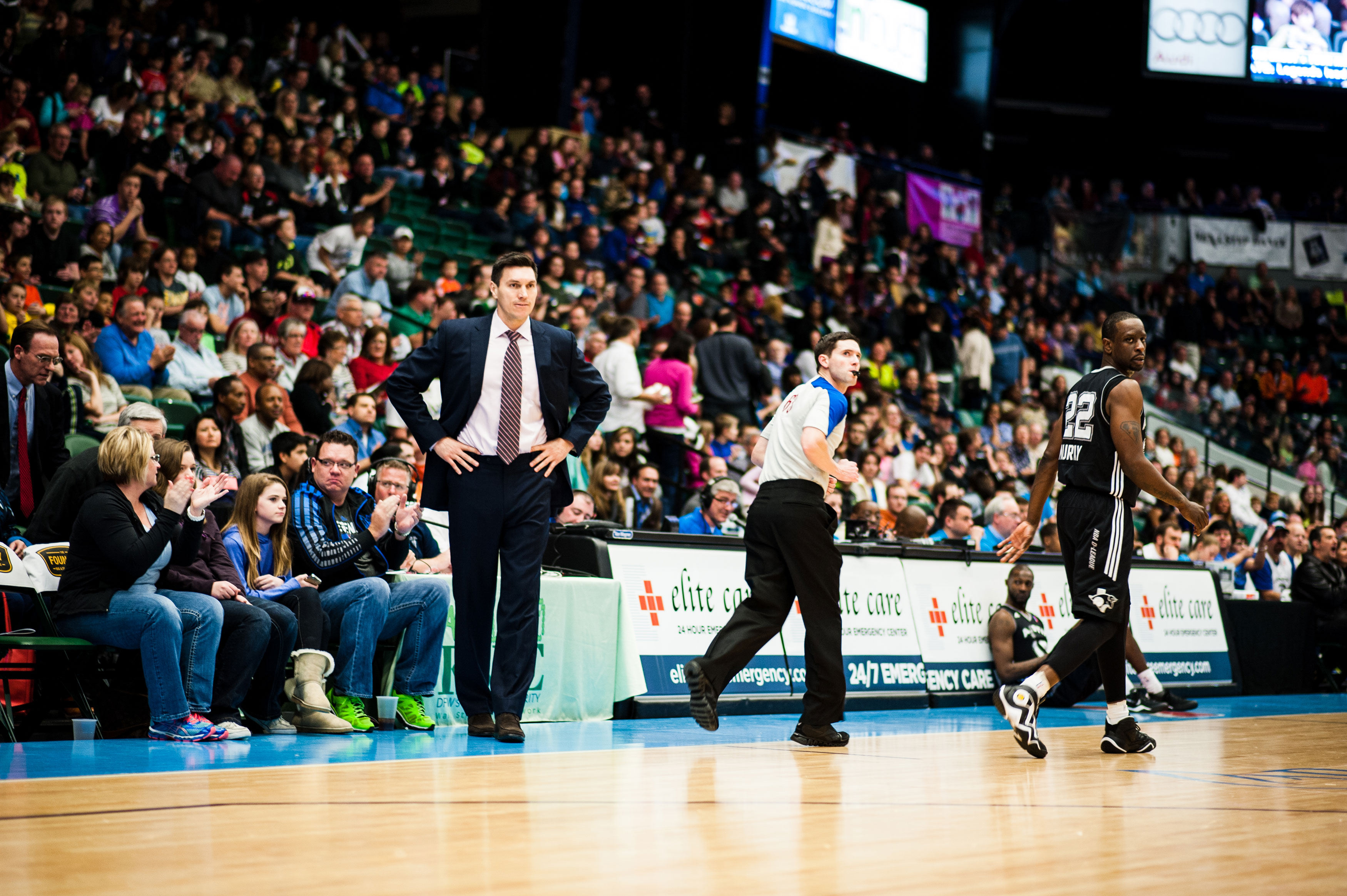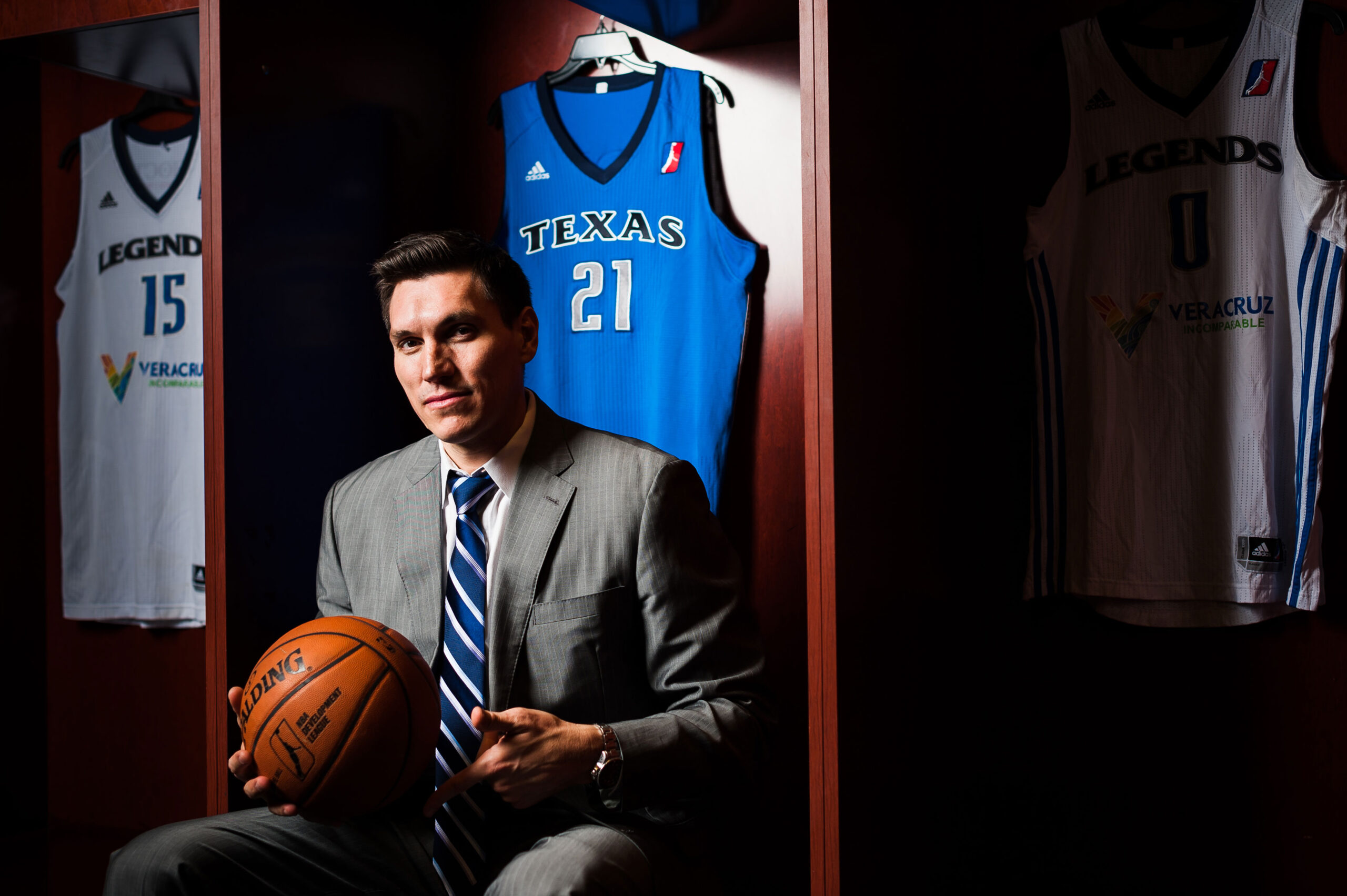Eduardo Najera doesn’t look entirely comfortable wearing a suit and tie while roaming the sideline as coach of the Texas Legends, the Dallas Mavericks’ affiliate in the NBA Development League. He tugs at the knot of his tie, absentmindedly fiddles with the jacket, rolls his shoulders and neck as though he’s trying to shrug the whole thing off.
You might be inclined to read his body language in a certain way. That Najera—just 37 and maybe a workout or two away from game shape—doesn’t just want to get rid of the suit. That he wants to put on a uniform and get back out on the court. You would be mistaken. He doesn’t regret retiring. He just doesn’t like wearing suits.
“It wasn’t hard for me to give it up, because I played the right way,” Najera says. He is in an empty dressing room inside Dr Pepper Arena, changing from the gray suit he was forced to put on for today’s photo shoot into a black t-shirt and sweats.
“That’s the one thing that I try to communicate with these guys. You never know when your career is going to be over. If you take a game off, a practice off, you cannot get it back. Because once you retire, you retire. You’re done. You can go back and play a pickup game, but I haven’t even done that, because the reality is I spent so much of my time, so much blood, sweat—I sacrificed my body for 12 years.”
He’s not speaking in empty athlete cliches. While with the Charlotte Bobcats in 2012, a stray elbow fractured his skull. And that doesn’t even take into account the serious knee injuries and various bumps and scrapes he suffered during his dozen years in the league. But Najera didn’t know his own career was over until it already was. When Donnie Nelson approached him before the 2012-13 season with an offer to coach the Legends, he hadn’t even decided to retire. “He saw something special in me,” Najera says of the Mavericks’ president and general manager and co-owner of the Legends.
Although Najera was the kind of heady player regarded by many as a glorified assistant coach during the latter years of his career—a role he embraced, taking less money for a chance to mentor the Nets’ young frontcourt in 2008, for example—Najera had never given much thought to coaching. He had never given much thought to anything besides playing—the next play, the next game, the next season.
Hardworking but slightly undersize for his natural position (power forward), Najera played 12 seasons in the NBA, beginning in 2000 with the Dallas Mavericks. The first Mexican-born player drafted by the NBA—and now the first Mexican-born coach of an NBA-affiliated team—he didn’t last so long in the league by accident. Najera was smart and tough, fearless and selfless, a great teammate and a favorite of every coach for whom he played, a list that includes some of the most successful names in the business—Don Nelson, George Karl, Larry Brown.

Despite being an All-American at the University of Oklahoma and one of the best players in the school’s history, he seamlessly transitioned from being The Man in college to Just Another Guy in the pros. He never tried to do more than he was capable of, never pushed to do more than he was asked to, and never took anything for granted. He learned that at Oklahoma from his coach, Kelvin Sampson, now an assistant with the Houston Rockets. “He taught me how to work hard, how to compete every single day,” Najera says. “Every single day.”
If Najera’s body language on the sideline speaks to anything, it’s those last three words. It’s not that he wishes he were out on the court—it’s that he wishes there were more players like him out there.
“I had to understand that they’re not like me,” he says, laughing a little. “That they’re not like I was as a player. I had to sort of adjust to that. I expected them to do things the way I used to do it.”
Najera hangs up his suit, wrapping a pair of ties around the hanger. “They have the sense that ‘I’m better than everybody else, and I’ve got to prove to everybody that I can score 20 points a night,’ ” Najera says. “That’s where they make a mistake, because when they make the NBA, they’re not going to get that many shots. They have to focus on the little things, the details. They have to focus on the scouting report. They have to focus on team basketball. They think by being selfish and scoring a bunch of points they’re gonna get to the NBA. But at the end of the day, teams in the NBA aren’t looking for that type of guy.”
He doesn’t say it, but he doesn’t have to: teams in the NBA are looking to the D-League for another Eduardo Najera. He never scored 20 points in a game (his career average stands at 4.9 points per game). He only appeared on SportsCenter in the background of other players’ highlights. His presence in the sports pages was mostly limited to the agate type of box scores and transaction reports.
In his native Mexico, however, a country with a basketball history that could be written in a tweet, he was and is a star. Najera isn’t the Michael Jordan of Mexican basketball. Rather, he isn’t just the Michael Jordan of Mexican basketball. He is its Jordan, Bill Russell, and James Naismith. Even post-retirement, he’s still a big enough deal south of the border that Veracruz, Mexico, came on board as one of the Legends’ biggest sponsors last season. The city’s name and logo are on the court (officially known as Veracruz Court at Dr Pepper Arena) and on the team’s jerseys. “That’s all him,” a Legends staff member says.
That said, Najera is not all that different from his players. They are all down in the D-League looking up, in Frisco and Fort Wayne and Erie and Bakersfield, hoping for a call-up to the big league. He could have already been there actually; Nelson could have easily arranged for Najera to have a seat next to Rick Carlisle on the Mavericks’ bench. And Nelson asked if Najera wanted to go that route. But he picked the Legends instead. He, too, needed time to develop.
“I knew I wasn’t ready to coach,” Najera says, “but I knew I had it in me.”






